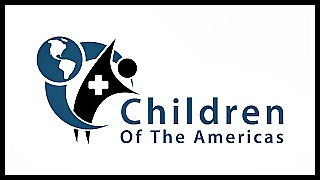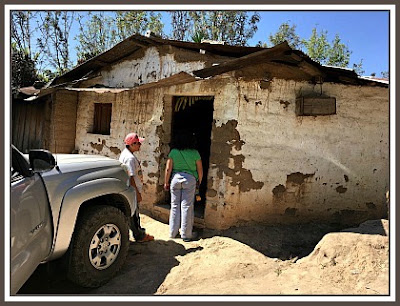Editors Note: When compassionate people from three different countries combine their efforts and resources, the results are nothing short of life-changing. The following blog post was written by Lesley, a Canadian tourist who happened to run into a COTA voluteer at just the right moment. A circumstance or a miracle? You decide.
Jody
When we
first arrived in the first town Nueva Santa Lucia we stopped in the center of
the village. Within a few minutes many people had gathered around Juniper as I
think it would have been a first to see a white baby for many of them. One of
the women asked if she could hold Juniper. I handed her over and Juniper was
happy to visit with a new happy face. It seemed like seconds before I turned
around and Juniper was nowhere to be seen. I had a little fright and told
Vicente (our Guatemalan guide) what had happened. He laughed and said that they
had probably taken her to show their families. He quickly told me that we would
go and find her. It only took about 5 minutes and a walk down a series of footpaths
through gardens and backyards to find her surrounded by about 20 kids.
One of
the kids was a four-year-old boy named Andy. Andy was sitting by himself a
little bit removed from the other kids. We stayed there for about an hour
talking to the family and playing with the children. While we were there we
found out that Andy had been born with both of his feet fixed into a point
position and sharply turned in. Colin (my husband) asked the mother where her
husband was and she told him that he had died. He also asked what the condition
was that Andy had and she said that she didn't know. Colin
couldn't believe that a mother couldn't even understand her son's
physical disability.
Andy
had never walked and he was 4 years old. The mother showed Colin that he couldn't
walk by picking him up and moving his legs. His feet were crooked and
absolutely stiff. The mother said she tried to contact a doctor but
he wouldn't talk to her because she had no money. One of Colin's feet were
turned in when he was born and they just put his leg in a cast for a couple of
weeks and said it was no problem. People in Guatemala aren't usually
born in the hospital though and there was no doctor in the village.
We told
Vicente about this in the morning as he was out negotiating a room for dinner
and us to stay in. The next day at breakfast he acknowledged that he knew about
that little boy and had a hard time seeing him because it was so sad for him to
see those kinds of problems in the poor villages. He said he was thinking about
it last night and he wanted to take a picture of the boy and put it on social
media to try and get enough money just so the mother could get the transport to
a hospital and be able to pay for the doctor. When they found him we took some
pictures and Vicente was very persistent in telling Andy's mother that
he didn't know what would come of it, he did not want to give her false hope.
We left the town that morning and continued our journey.
A few
days later I was walking through the streets of San Pedro and a lady stopped me
and asked me if I knew where she could get a good cup of coffee. I was just
walking around with Juniper waiting for Colin while he was in school so I told
her that I would walk with her to a good Italian place. When we got there she
asked me if she could buy me a coffee. I said sure and we sat and chatted. She
told me that she was a doctor on a surgical mission trip with a group of
doctors from the US. I connected Andy with her in my mind but was a little shy
and thought it would be way too much to organize and coincidental for a
connection to be made. I left the coffee shop to get Colin but the possibility
of this little boy getting help was weighing heavy. I quickly returned because
I thought at least I could get the name of her organization and pass it on to Vicente.
When we got there Vicente was actually sitting in the same coffee shop a few
tables away. I talked to the doctor, her name is Kaye, and she was actually
really excited to see if she could help this boy. We brought Vicente over to
the table and I did my best to try and translate, thank goodness for the few
weeks of Spanish school. Kaye said that she would email me after she spoke with
her supervisor and we would do our best to see if an operation or at least
an examination would be possible.

It
was Wednesday and COTA was going to be doing operations starting the next Monday for a week.
The good thing was that the hospital that they were doing these operations in, Retalhuleu
was relatively close to the town where Andy lives. Relatively meaning that it
was a 2-3 hour hike and two different camionetta rides (a pickup truck with a
bar down the middle of the back that people can stand up and hold onto).
Vicente said that if he got the word that the doctors could see Andy he would
go to the village from San Pedro (where we were) about a 2 hour hike and a 1
hour camionetta ride, to carry Andy to the hospital from his village.
The
next day I was walking around San Pedro and I ran into Kaye again; she was out of
breath. She said that she had been looking for me for an hour because she had
some urgent info. She said that not only could her group examine Andy they also
had 1000 Quetzales about $200 for Andy to pay for the journey and food and
hotel for Andy and his Mom while they were in Retalhuleu. I was buzzing, this
was great news. I was also a little in disbelief and not wanting to get too hopeful
because so much had to come together for this to work. We quickly went to find
Vicente to give him the good news. This wasn't easy as I had no idea how
to find him but after asking a few people we found out where he lived and
walked there.
He was overjoyed. We made arrangements while Vicente's nephew
watched Juniper. Kaye also gave Vicente the phone number of a translator that
he could call as soon as they arrived at the hospital. She said they would need
to call, as there are usually line-ups of people waiting outside of the
hospital when their group is there and he would be able to come right in if
they called first. Kaye was in a rush so she took off right away after that. I
said good-bye to her and quickly went to find Colin to tell him the good news.
I was buzzing.
I
thought that was really nice of her to spend her few days of vacation before
some intense work to find me and help us make this happen for Andy. Colin got
really excited and said that he was going to round up a few people to accompany
Vicente to help him carry Andy on the 5 hour hike to the village to find Andy
and then on to the hospital. Colin got a few friends together and they
made a plan to go on
Sunday.
There
was so much excitement and energy around this where we were. In the past I have
travelled to many countries where I have seen so much sorrow and illness
and felt helpless amongst it all. Now it felt like such a blessing to us to
have seen something that pulled at our hearts and been able to do something
about it. Maybe, just maybe, this could work and Andy just may be able to walk
and play with his friends. The funny thing was that Andy and his family had no
idea what we were up to and that his life was about to change.
Sunday came and Vicente, Colin and 3 others packed up at 5:30am to start the
journey. Vicente had gotten a hold of Andy's family and told them to be
ready for the journey. Vicente had an old metal-framed backpack and he built a
wooden seat on it to carry Andy. Vicente told Colin that he was so excited and
thrilled the night before that he hadn't slept all night. They jumped into a
cameoneta and headed out to a remote village about an hour away. When they
arrived they jumped off the truck and walked through the village and out the
other side dropping out of civilization into the jungle paths of the western
highland mountains. When they arrived at Andy's house Vicente was very
clear that they were just going for an examination and that there was
no guarantee that they would be able to do surgery. They
strapped Andy up into the carrier and made the journey in good time. When they
got to the hospital Vicente made a phone call and they passed the big line up
and went on in. Colin and crew found the bus back to San Pedro, as they wanted
to get back the same day and Vicente stayed with Andy and his mother.
At that point Andy was scheduled for an examination on Monday, the next day.
Vicente came back on
Tuesday and said that the examination showed that surgery was
possible and that they would do it on Wednesday.
Andy
got his operation to fix his legs and is now wearing braces for the next 6
months and when he takes them off he can begin to learn how to walk.
Vicente returned the weekend after that to carry Andy back to his
village. He said he didn't need help and actually did the 2-hour hike in 3 hours with Andy on
his back by himself. The crazy thing is that that hike is mostly up hill in
that direction. I hope that I have that much energy at 61. We heard from
Vicente that his mother was really happy because the morning after the
operation she saw him sit up for the first time by himself.
It was
such a joy to be a part of this adventure. I am hoping to hear about the
progress of Andy but our only connection is through Vicente who doesn't use the
Internet so I guess we will just have to go back and visit.
*With special thanks to Kay Beatty, for her passion and persistence in connecting Andy with the Children of the Americas 2017 Team
Written by:
Lesley from Canada
























